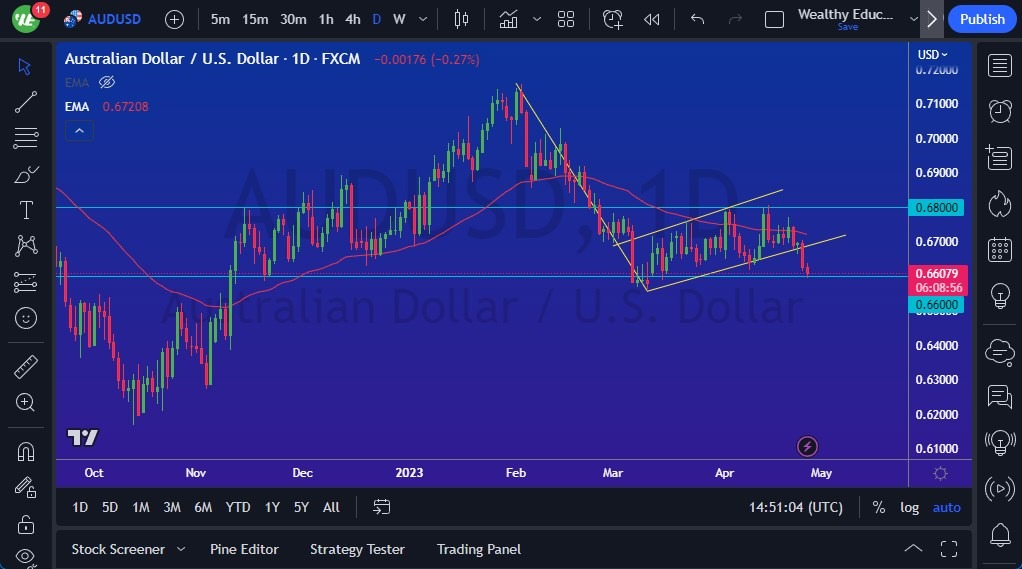AUD/USD Forecast: Continues To Threaten Support
- The AUD/USD has been on a downward trend lately, as the global economy slows down.
- The Australian dollar is closely tied to the commodity markets and global growth, making it vulnerable to market volatility.
- Additionally, the Australian dollar's dependence on China, Australia's largest customer, further exacerbates its exposure to global economic conditions.
- As China's economy weakens, the Australian dollar could suffer a significant decline.
In Wednesday's trading session, the Australian dollar fell, testing the 0.66 level. If the Australian dollar continues to decline, it may break below the 0.6550 support level, which could lead to a further sell-off. The next major support level is around 0.64, which could see the market drop significantly. Looking at the chart, the market is becoming increasingly bearish, with a possible bearish flag forming. Currently, the market is trying to build enough momentum to break down, but the question remains whether it can break below the support level just below.
The 50-Day EMA sits at the 0.67 level, which is where the market previously broke down from. If the market breaks above this level, it could see the market go up to the top of the overall range, around the 0.68 level. This level is the 200-Day EMA, an indicator that many traders pay attention to.
The Market Favors Selling
Traders should adopt a "fade the rally" approach in this type of market, where the Australian dollar is likely to remain volatile as traders weigh global economic conditions and commodity markets. While there may be occasional rallies, it is more likely that the market will continue to face selling pressure.
One reason for the Australian dollar's weakness is the slowdown in China's economy. As China is Australia's largest customer, any decline in China's economic growth will have a significant impact on the Australian dollar. Additionally, the Chinese government has been reducing its economic stimulus measures, which is also contributing to the weakening of China's economy.
Another factor affecting the Australian dollar is the ongoing trade tensions between the United States and China. The trade war has resulted in significant volatility in the global markets, including the commodity markets. As a result, the Australian dollar, which is highly correlated to the commodity markets, has been negatively impacted.
With all this, the market continues to look as if it favors selling and therefore is a bearish trend still. I don’t look for a massive breakdown, at least not yet.
(Click on image to enlarge)

More By This Author:
EUR/USD Forecast: Continues To Pressure The UpsidePairs In Focus This Week - Sunday, April 23
GBP/USD Forecast: Looking For Direction In The Same Area
Disclosure: DailyForex will not be held liable for any loss or damage resulting from reliance on the information contained within this website including market news, analysis, trading signals ...
more


